Abstract
Applicability of the manometric method for studying the oxidation of pyritic material in the presence of bacteria has been demonstrated. Resting cells of Ferrobacillus ferrooxidans accelerated the oxidation of coal pyrites and coarsely crystalline marcasite, but were inactive on coarsely crystalline pyrite. Resting cells of Thiobacillus thiooxidans were inactive on all pyrites tested. Oxidation rates in the presence of Ferrobacillus were increased by reducing the particle size of pyritic samples, and, in one case, by removing the CaCO3 from a calcite-containing sample.
Full text
PDF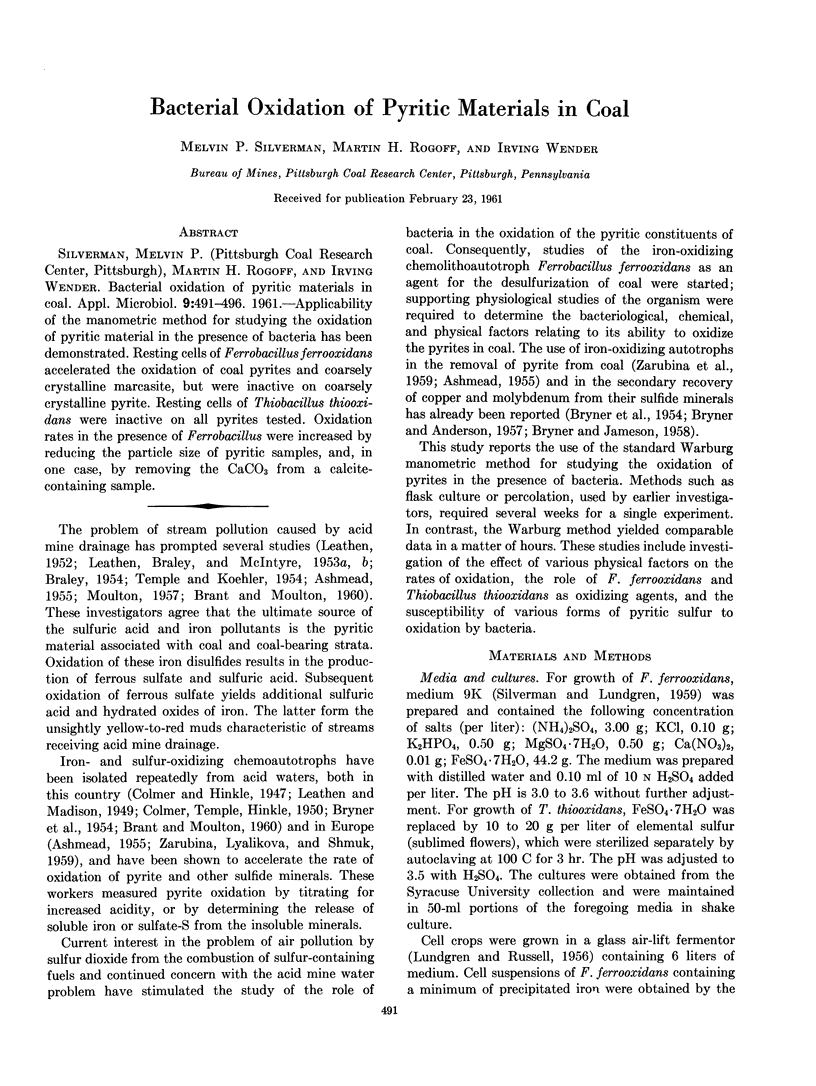
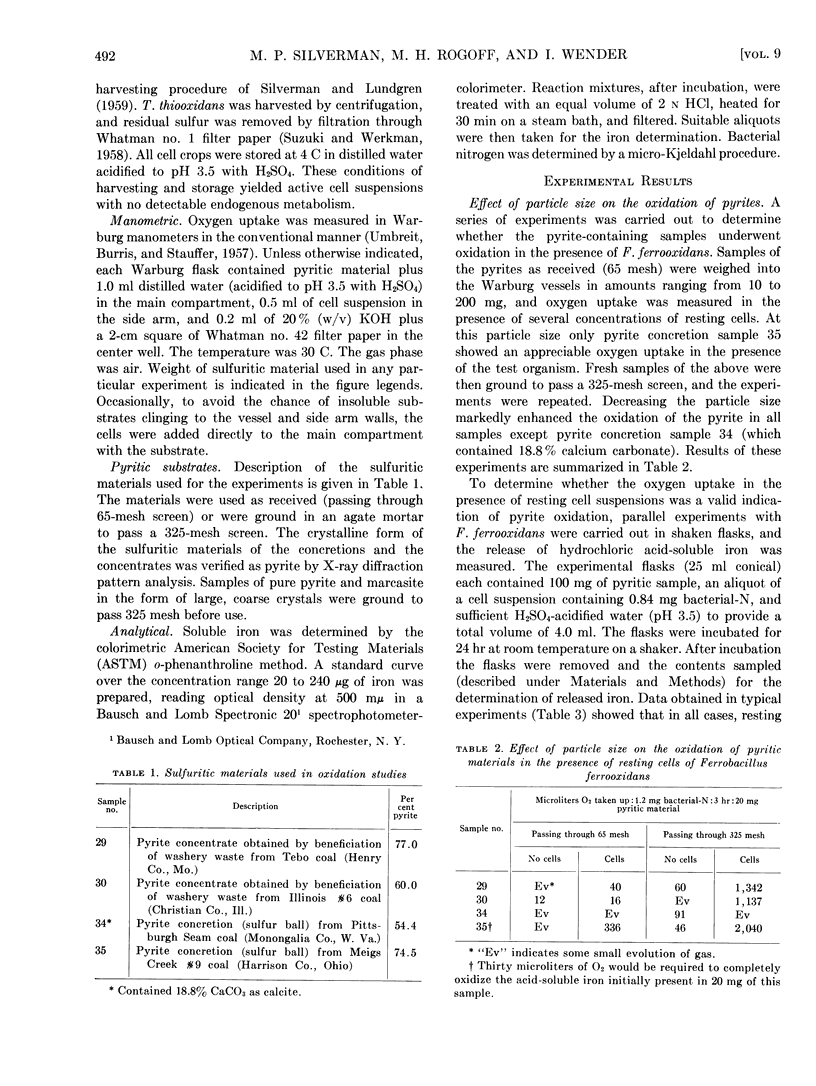

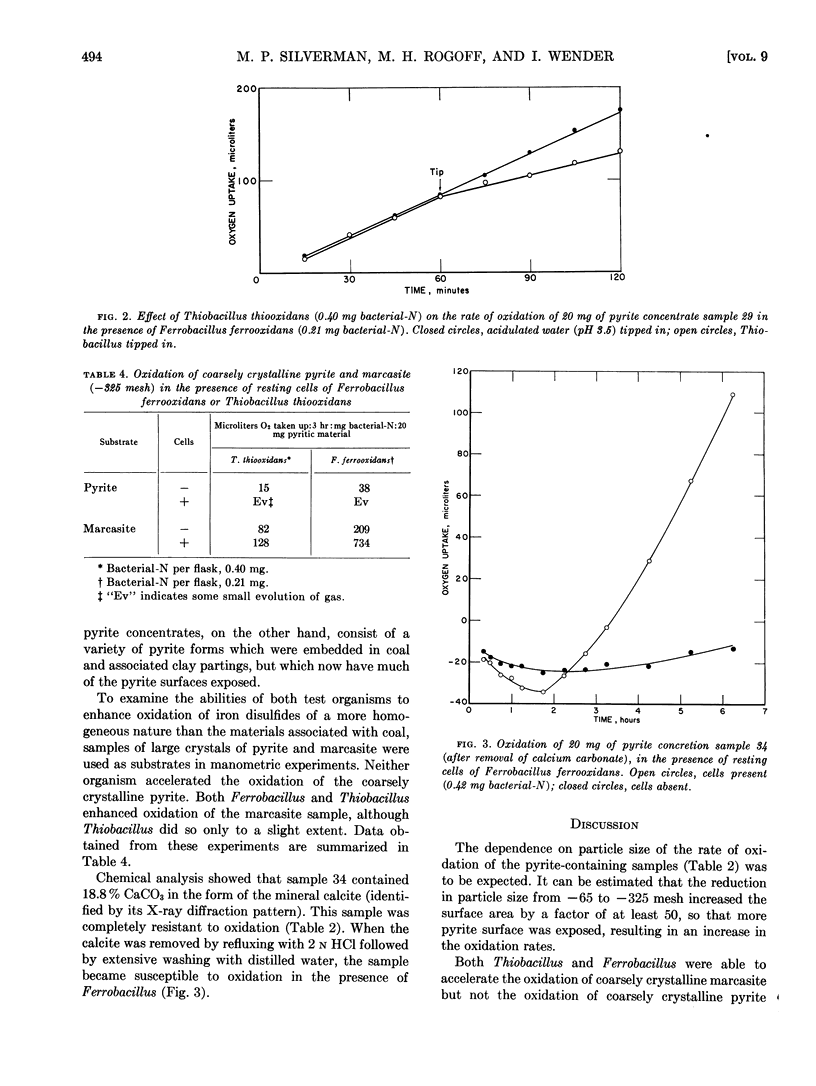
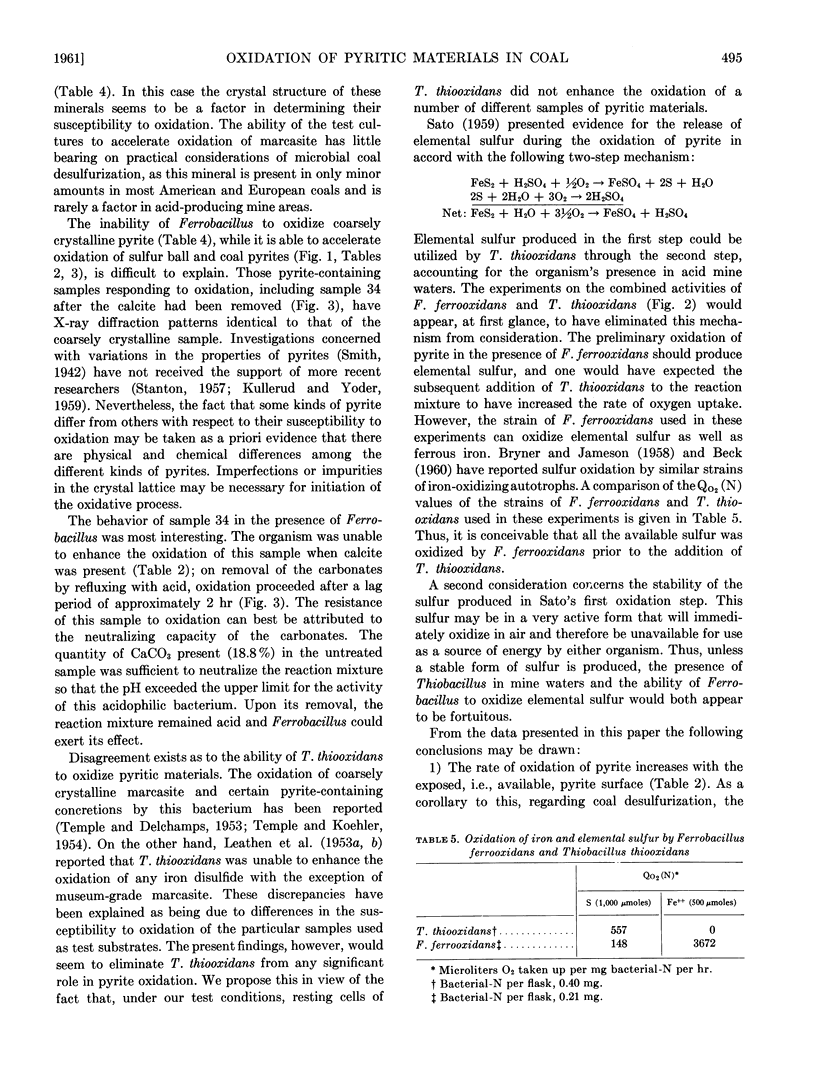
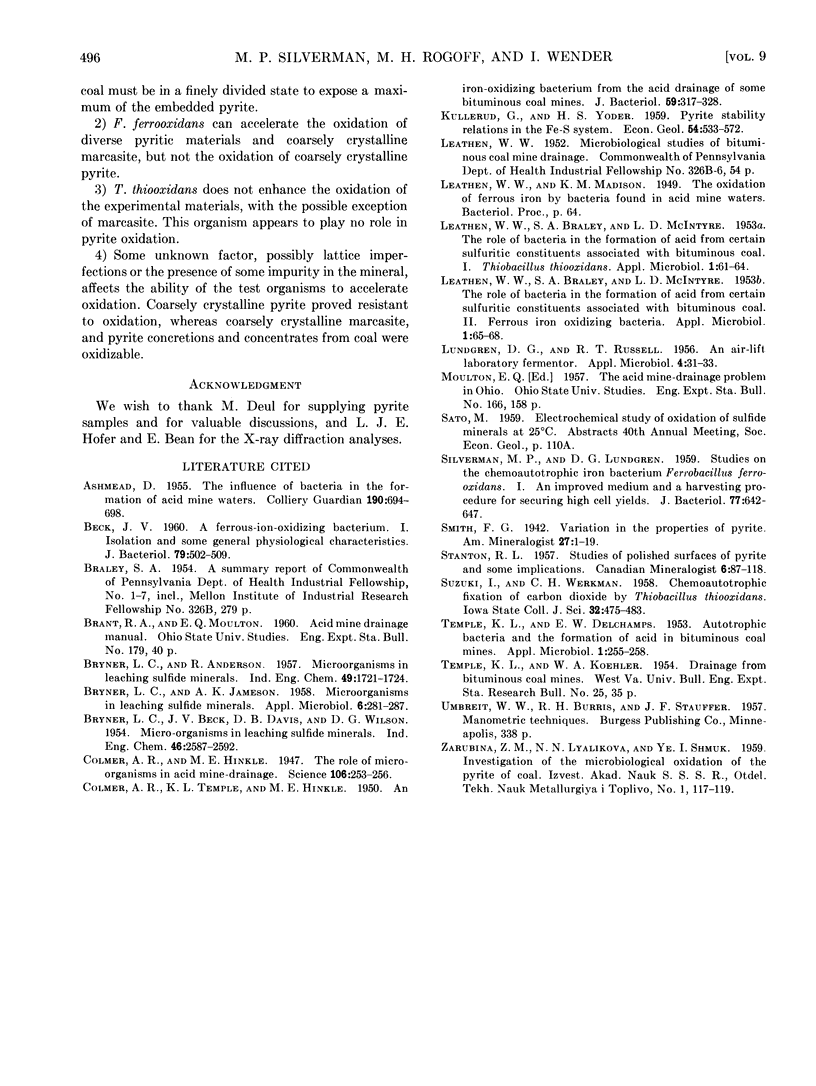
Selected References
These references are in PubMed. This may not be the complete list of references from this article.
- BECK J. V. A ferrous-ion-oxidizing bacterium. I. Isolation and some general physiological characteristics. J Bacteriol. 1960 Apr;79:502–509. doi: 10.1128/jb.79.4.502-509.1960. [DOI] [PMC free article] [PubMed] [Google Scholar]
- BRYNER L. C., JAMESON A. K. Microorganisms in leaching sulfide minerals. Appl Microbiol. 1958 Jul;6(4):281–287. doi: 10.1128/am.6.4.281-287.1958. [DOI] [PMC free article] [PubMed] [Google Scholar]
- COLMER A. R., TEMPLE K. L., HINKLE M. E. An iron-oxidizing bacterium from the acid drainage of some bituminous coal mines. J Bacteriol. 1950 Mar;59(3):317–328. doi: 10.1128/jb.59.3.317-328.1950. [DOI] [PMC free article] [PubMed] [Google Scholar]
- Colmer A. R., Hinkle M. E. The Role of Microorganisms in Acid Mine Drainage: A Preliminary Report. Science. 1947 Sep 19;106(2751):253–256. doi: 10.1126/science.106.2751.253. [DOI] [PubMed] [Google Scholar]
- LEATHEN W. W., BRALEY S. A., Sr, MCINTYRE L. D. The role of bacteria in the formation of acid from certain sulfuritic constituents associated with bituminous coal. I. Thiobacillus thiooxidans. Appl Microbiol. 1953 Mar;1(2):61–64. doi: 10.1128/am.1.2.61-64.1953. [DOI] [PMC free article] [PubMed] [Google Scholar]
- LEATHEN W. W., BRALEY S. A., Sr, MCINTYRE L. D. The role of bacteria in the formation of acid from certain sulfuritic constituents associated with bituminous coal. II. Ferrous iron oxidizing bacteria. Appl Microbiol. 1953 Mar;1(2):65–68. doi: 10.1128/am.1.2.65-68.1953. [DOI] [PMC free article] [PubMed] [Google Scholar]
- LUNDGREN D. G., RUSSELL R. T. An airlift laboratory fermentor. Appl Microbiol. 1956 Jan;4(1):31–33. doi: 10.1128/am.4.1.31-33.1956. [DOI] [PMC free article] [PubMed] [Google Scholar]
- SILVERMAN M. P., LUNDGREN D. G. Studies on the chemoautotrophic iron bacterium Ferrobacillus ferrooxidans. I. An improved medium and a harvesting procedure for securing high cell yields. J Bacteriol. 1959 May;77(5):642–647. doi: 10.1128/jb.77.5.642-647.1959. [DOI] [PMC free article] [PubMed] [Google Scholar]
- TEMPLE K. L., DELCHAMPS E. W. Autotrophic bacteria and the formation of acid in bituminous coal mines. Appl Microbiol. 1953 Sep;1(5):255–258. doi: 10.1128/am.1.5.255-258.1953. [DOI] [PMC free article] [PubMed] [Google Scholar]


